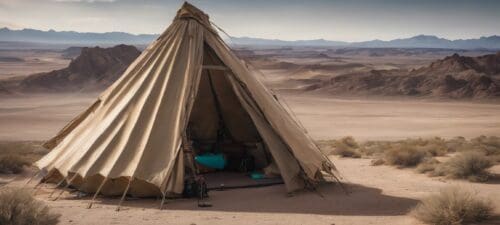Breath of the Wild: Reimagining Zelda’s Open World

Updated On: November 08, 2025 by 
Embarking on an adventure through expansive video game realms can sometimes be quite the daunting prospect, leaving you a tad perplexed about where to commence your journey. It’s a familiar sensation for many of us, yet ‘Breath of the Wild‘ manages to turn that potential overwhelm into sheer exhilaration.
In this feature, we’ll accompany you as you navigate the re-envisioned expanses of Hyrule, illustrating how it raises the bar for exploration and liberty within gaming. Brace yourself to unearth the wonders concealed within Zelda’s crowning achievement!
The Evolution of Open World Design in Zelda Games
Ocarina of Time laid the groundwork for open world design in Zelda games, but it was Breath of the Wild that truly revolutionised the series with its groundbreaking approach to gameplay and exploration.
The shift towards a more dynamic and immersive open world experience has set a new standard for game development.
Ocarina of Time’s influence
Ocarina of Time set a new standard for open world design in video games. Its rich storytelling and immersive landscapes laid the groundwork for Breath of the Wild’s expansive, stunning Hyrule.
We see its impact in the seamless integration of puzzles, side quests, and RPG elements that engage players at every turn. The sense of freedom it introduced—allowing Link to roam vast terrains on Epona or solve mysteries out of sequence—paved the way for an even more creative open-world experience.
With this legendary game, Nintendo crafted an adventure that reshaped our expectations. Players were no longer confined to linear progression but could explore and interact with a living world full of surprises.
This visionary approach not only influenced future Zelda titles but also became a touchstone in game development across the industry. It’s no surprise that echoes of Ocarina’s groundbreaking game design can be felt in today’s best open-world games, continuing to inspire both developers and gamers alike.
Breath of the Wild’s groundbreaking approach
Transitioning from Ocarina of Time’s influence to Breath of the Wild’s groundbreaking approach, we witness a revolutionary shift in open-world game design. “Breath of the Wild” redefines exploration with its non-linear narrative and focus on emergent systems that allow players to chart their own course through Hyrule.
This has influenced a new wave of open world games, ushering in an era where player agency takes center stage amidst stunning visuals and immersive gameplay. The game offers players an unparalleled level of freedom, changing the landscape of open-world gaming by providing a captivating and dynamic experience that continues to inspire game developers and captivate players worldwide.
Breath of the Wild’s Unique Gameplay Features
Breath of the Wild introduces unique gameplay features that set it apart from other Zelda games, with exploration as a key element and emergent systems that make every playthrough different.
The mastery-based progression system also adds depth to the player’s experience, making it a truly original game reimagining.
Exploration as a key element
Exploration serves as a key element in Breath of the Wild, allowing players to discover hidden treasures, encounter diverse environments, and uncover unique challenges. From scaling towering mountains to diving deep into mysterious forests and navigating through vast plains, the open world of Hyrule offers an immersive experience for players to traverse and engage with.
With minimal constraints on exploration, players have the freedom to chart their own path across the expansive landscape while encountering various surprises along the way. By incorporating emergent gameplay elements such as dynamic weather systems and intricate environmental interactions, Breath of the Wild ensures that exploration remains a captivating and essential aspect of the player’s journey through Hyrule.
The game encourages a spirit of curiosity by rewarding thorough exploration with valuable resources, rare items, and unexpected encounters throughout its meticulously crafted world.
Emergent systems
Moving from the emphasis on exploration as a key element in Breath of the Wild, we delve into its emergent systems. This game introduces an innovative approach to gameplay that allows for unforeseen interactions and outcomes based on player decisions and environmental factors.
In other words, the game’s systems react dynamically to each other and to the players’ actions, resulting in unexpected situations that can arise from the combination of various elements within the game world.
Breath of the Wild’s emergent systems contribute significantly to its immersive open-world experience. Players encounter instances where weather conditions affect their surroundings or witness interactions between different creatures and characters within Hyrule.
Mastery-based progression
Building on the emergent systems, Breath of the Wild introduces mastery-based progression that allows players to develop their skills and abilities as they explore the vast world of Hyrule.
This means that instead of following a linear path of skill acquisition, players have the freedom to grow and improve through hands-on experience. By engaging in activities such as combat, puzzle-solving, and exploration, players can gradually enhance Link’s abilities, making him more adept at traversing challenging terrain or defeating formidable enemies.
This approach aligns with the game’s core philosophy of player agency and non-linearity, offering a more immersive and personal journey within the open world.
In this system, there are no predetermined levels or skill trees; rather, progress is based on what players choose to focus on and how they decide to tackle different challenges in the game.
As gamers explore new territories and encounter various obstacles, they gain valuable knowledge about gameplay mechanics and environmental interactions. Such experiential learning not only empowers players but also fosters a deeper connection between them and the game world itself.
The Vast and Stunning World of Hyrule
Covering every corner of Hyrule, players are greeted with stunning visuals and a vast world to explore. The freedom of traversal allows for an immersive open-world experience unlike any other Zelda game.
Visuals and art style
The visuals and art style of Breath of the Wild are breathtaking, immersing players in a stunningly detailed world. The game’s open-world environment is beautifully reimagined with vibrant colours, diverse landscapes, and intricate character designs.
Hyrule comes to life with its picturesque scenery, from lush fields and forests to rugged mountains and serene lakes.
Players can’t help but be captivated by the attention to detail in the game’s visual presentation, which adds an extra layer of depth to their immersive experience. The art style reflects a seamless blend of traditional Zelda aesthetics with modern design elements, creating a visually compelling world that feels fresh yet familiar.
From sun-drenched plains to shadowy shrines, every corner of Hyrule is meticulously crafted to evoke wonder and inspire exploration.
The freedom of traversal
The vast and visually stunning world of Hyrule in Breath of the Wild allows players to traverse its landscapes freely right from the start. Players can climb mountains, glide over valleys, and swim across rivers, offering a sense of freedom rarely experienced in other open-world games.
This non-linear approach encourages exploration and discovery as players chart their own path through the game’s expansive environment.
Breath of the Wild’s open world is designed to be traversed without limitations or restrictions, making every inch of Hyrule accessible for players to explore. The freedom of traversal fosters a sense of immersion and adventure that sets it apart as one of the best open-world gaming experiences available today.
New Additions to the Usable Item Arsenal
The tablet, dormant robots, and amiibos are just a few of the new items that players can use in Breath of the Wild’s open world. These additions add an extra layer of depth and strategy to the game, enhancing the overall gaming experience for players.
The tablet
In Breath of the Wild, the tablet is a versatile tool that Link uses to interact with the world around him. It serves as a map, allowing players to mark locations and plan their next move.
Additionally, it acts as a scope for surveying distant areas and enemies, aiding in exploration and strategic planning. Players can also use the tablet to track environmental changes, weather patterns, and find hidden items or resources.
The tablet enhances the immersive open-world experience by providing essential information about Hyrule’s expansive landscapes and diverse ecosystems.
Link’s interaction with dormant robots using the Sheikah Slate tablet adds another layer of gameplay depth. By accessing different abilities on the tablet, players can control these ancient machines strategically – solving puzzles or engaging in combat situations creatively.
Dormant robots
Transitioning from the innovative tablet to another intriguing addition, dormant robots introduce a unique element to the gameplay in Breath of the Wild. These ancient mechanical beings lie scattered throughout Hyrule, waiting for players to activate them and discover their hidden potential.
Once awakened, these dormant robots can assist players in various ways, aiding Link on his journey with their advanced technology. From combat support to solving puzzles, these mechanised allies add an extra layer of depth and strategy to the already expansive world of Breath of the Wild.
Crafted as relics of a forgotten era, dormant robots provide a refreshing twist to traditional allies within open-world games. Their inclusion not only enriches the player’s experience but also serves as a testament to Breath of the Wild’s commitment to delivering inventive and diverse gameplay elements amidst its vast and awe-inspiring world.
Amiibos
Amiibos are small, interactive figurines that can be used with the Nintendo Switch console to enhance the gaming experience. In Breath of the Wild, amiibos unlock various in-game rewards and bonuses, such as special weapons, outfits, or even helpful items like food and rupees.
By tapping an amiibo to the console’s NFC touchpoint, players can receive these rewards in the game.
These collectable figures add a new layer of interactivity to Breath of the Wild by offering players additional ways to customise their gameplay experience. The use of amiibos provides an extra incentive for exploration and collection within the vast open world of Hyrule.
The Familiarity of Zelda in a Reimagined Format
We’ll explore how Breath of the Wild incorporates classic Zelda elements in a more open and flexible game design, offering a fresh take on the beloved franchise. Join us to discover how this reimagined format creates an immersive and engaging gaming experience like never before.
Classic Zelda elements
Classic Zelda elements, such as swordplay, exploration, and puzzle-solving, are reimagined in Breath of the Wild. Players can still expect to encounter familiar characters like Princess Zelda and the antagonist Ganon.
The game also features iconic items such as the Master Sword and boomerang. Additionally, dungeons with challenging puzzles have been a staple of Zelda games, providing a sense of familiarity while exploring the new open world.
The shift to a more open and flexible game design in Breath of the Wild is evident through its traditional RPG elements – side quests and character progression – combined with classic Zelda elements.
The shift to a more open and flexible game design
The shift to a more open and flexible game design in Breath of the Wild signifies a departure from traditional linear gameplay. This change allows players to approach challenges and objectives in their preferred order, creating a truly immersive experience.
With the open-world design, players can explore Hyrule at their own pace, uncovering hidden secrets and embarking on various side quests that add depth to the gameplay. The flexibility of this game design empowers players to make meaningful decisions that impact their journey, contributing to an engaging and personalised adventure through the vast landscapes of Hyrule.
Breath of the Wild’s more open and flexible game design encourages creativity and experimentation by providing players with diverse tools and abilities. This new direction not only sets it apart from previous Zelda titles but also establishes it as a groundbreaking example within the open-world gaming genre.
Conclusion
Breath of the Wild reshapes Zelda’s open world with non-linear action-adventure gameplay. Its visually stunning reimagining offers a beautiful environment for exploration. This RPG allows players to explore every inch of Hyrule from the start, influencing open-world games even years later.
With its impactful influence on the genre, Breath of the Wild stands as a groundbreaking example of creative open world design.
FAQs
1. What makes “Breath of the Wild” different from other Zelda games?
“Breath of the Wild” stands out with its groundbreaking open-world design, allowing for unparalleled openworld exploration and giving players a truly traversable world to discover.
2. How does exploring work in “Breath of the Wild”?
Exploring in this immersive openworld experience means you can travel anywhere across vast landscapes, solve puzzles, embark on side quests, and collect various items whilst completing objectives.
3. Can you describe the kind of adventure “Breath of the Wild” offers?
This action-adventure game is one of the best open-world games that blends classic Zelda gameplay with innovative mechanics for a creative and engaging video game exploration journey.
4. Does “Breath of the Wild” include roleplaying elements?
Yes, it includes role-playing features allowing you to take control over every choice and interaction within a highly interactive environment as you navigate through its expansive universe.
5. Is there more than just fighting enemies in “Breath of the Wild”?
Absolutely! Besides combat, you’ll be collecting items, uncovering secrets throughout an expansive terrain and solving intricate puzzles that contribute to your overall adventure game experience.









